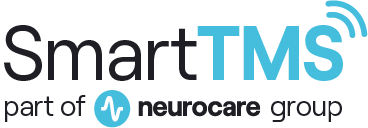Treating PTSD with TMS - the evidence
Can transcranial magnetic stimulation help with PTSD? Smart TMS has successfully reduced PTSD symptoms for most patients, leading to a noticeable improvement in their condition.

What is the recommended treatment for PTSD?
According to the 2018 NICE Guidelines, managing PTSD typically involves 8 to 12 sessions of trauma-focused Cognitive Behaviour Therapy. Other helpful treatments might include EMDR or exposure therapy. Medications can help ease PTSD symptoms, with Sertraline and Paroxetine being approved in the UK, and Venlafaxine and Risperidone also recommended. Research shows that about two-thirds of PTSD patients recover naturally or with treatment within six years, while one-third may develop a chronic condition.
How does Transcranial Magnetic Stimulation (TMS) work?
TMS uses magnetic fields to stimulate the brain through the scalp. This process involves a brief, strong magnetic pulse that safely reaches the brain's neurons without pain. TMS alters the brain's electrical activity, leading to both physical and behavioral changes. According to NICE, TMS is a safe and effective treatment for depression.
Can TMS treat PTSD?
There have been five reviews published on randomised controlled trials (RCTs) examining the use of TMS for treating PTSD. Earlier reviews were conducted by Berlim et al. (2014), Trevizol et al. (2016), and Yan et al. (2017).
Recently, Harris et al. (2021) reported a treatment Effect Size of 1.44 for TMS. For comparison, the Effect Size for EMDR in treating PTSD was 1.19, and for CBT, it was 0.72 (Jericho et al. 2021).
A recent review of TMS treatment for PTSD found that its effectiveness had a Standardized Mean Difference (SMD) of -1.13. For comparison, the drug Prazosin, also used for PTSD, has an SMD of -0.31. Although these numbers can be complex, it's important to note that in 2018, Carpenter treated 35 PTSD patients with TMS, and 66% of them showed significant symptom reduction. All studies confirm that TMS is a safe treatment option for PTSD.
What are the treatment results at Smart TMS?
At Smart TMS, we treated 16 patients with PTSD using TMS. Our results showed that 82% of these patients experienced at least a 20% reduction in symptoms, as indicated by lower IES-R scores. Furthermore, 44% (7 out of 16) of the patients achieved remission and no longer met the criteria for clinical PTSD.
Conclusions and recommendations:
We advise patients to follow the NICE Guidelines for PTSD treatment. Research shows that TMS is an effective treatment for PTSD, often outperforming CBT and EMDR. TMS greatly reduces symptoms for most PTSD patients. Those with persistent PTSD should consider TMS as a treatment option.

Dr Leigh A Neal MB BCh FRCPsych MRCGP MD
Consultant in Psychiatry and Neuromodulation
Medical Director: Smart TMS
Contact our team about TMS treatment
Not sure if TMS is right for you?






